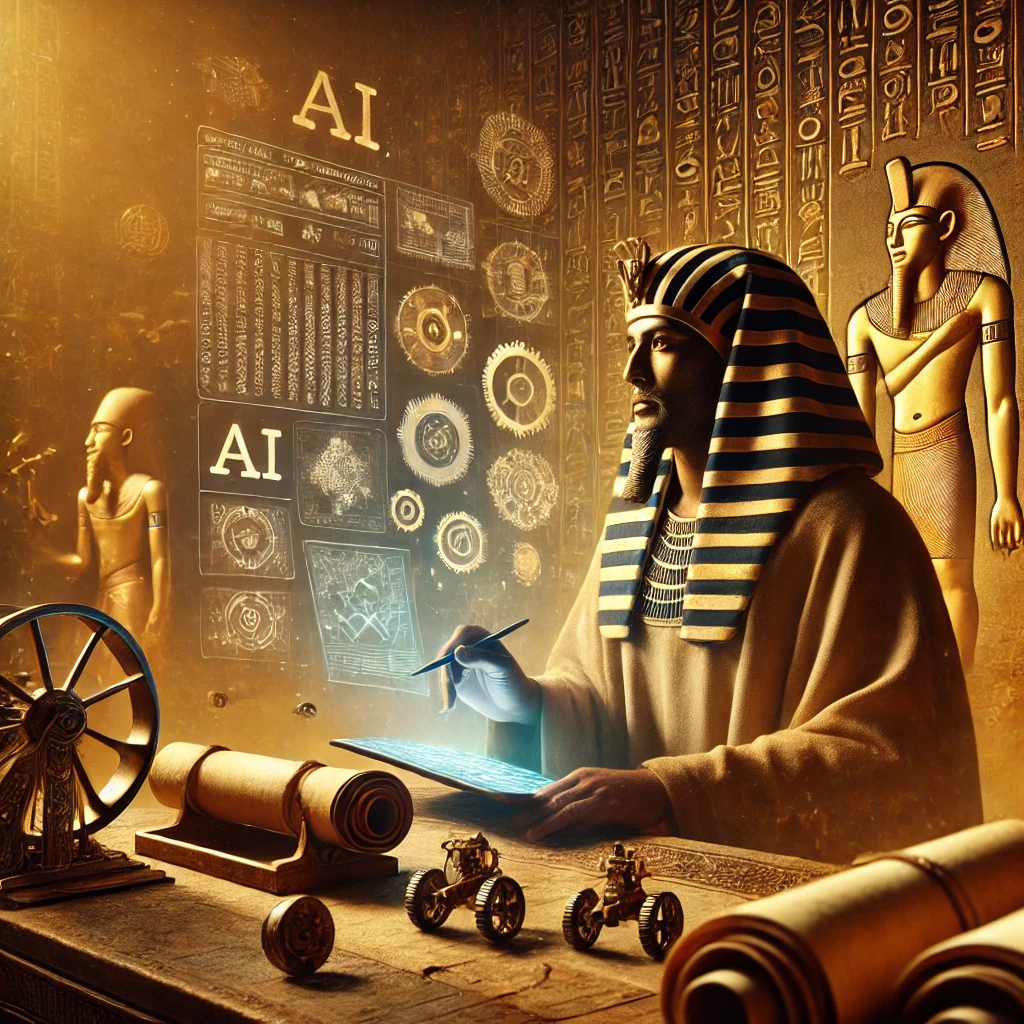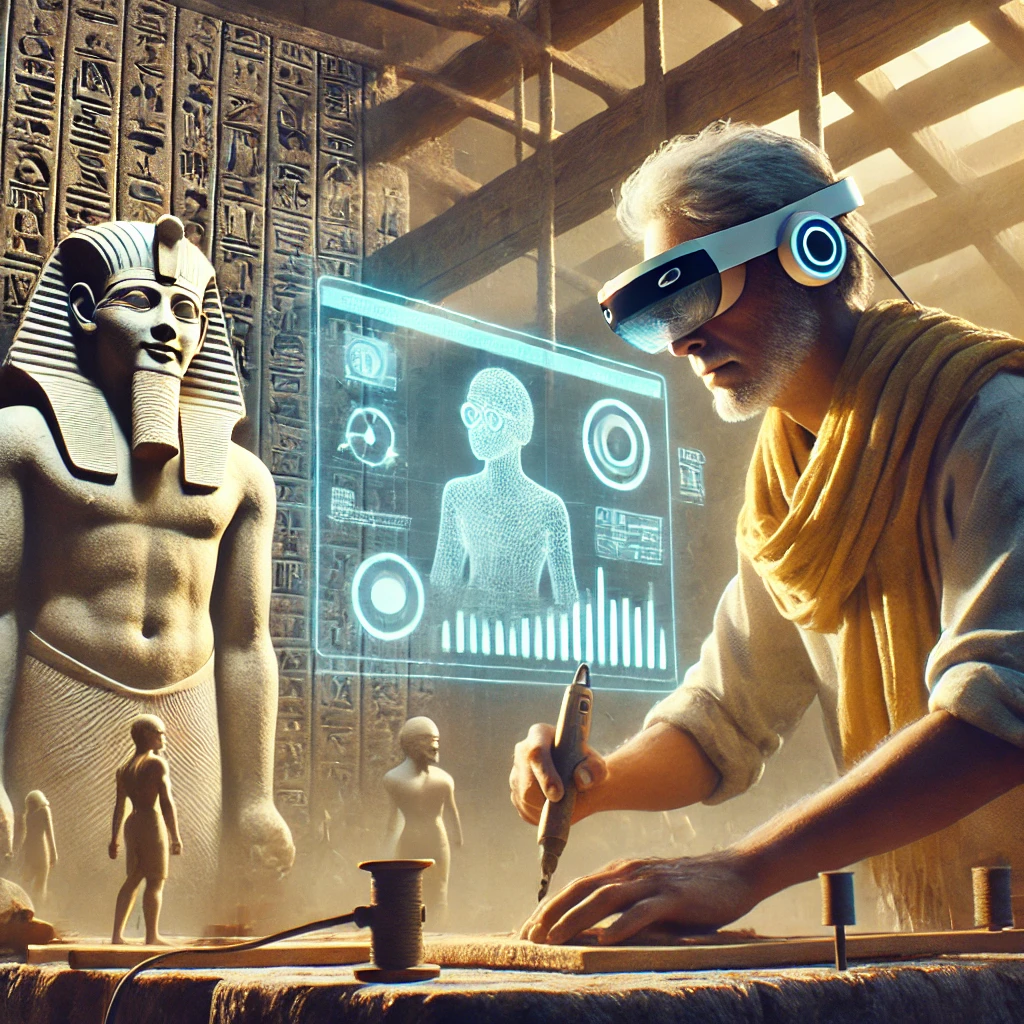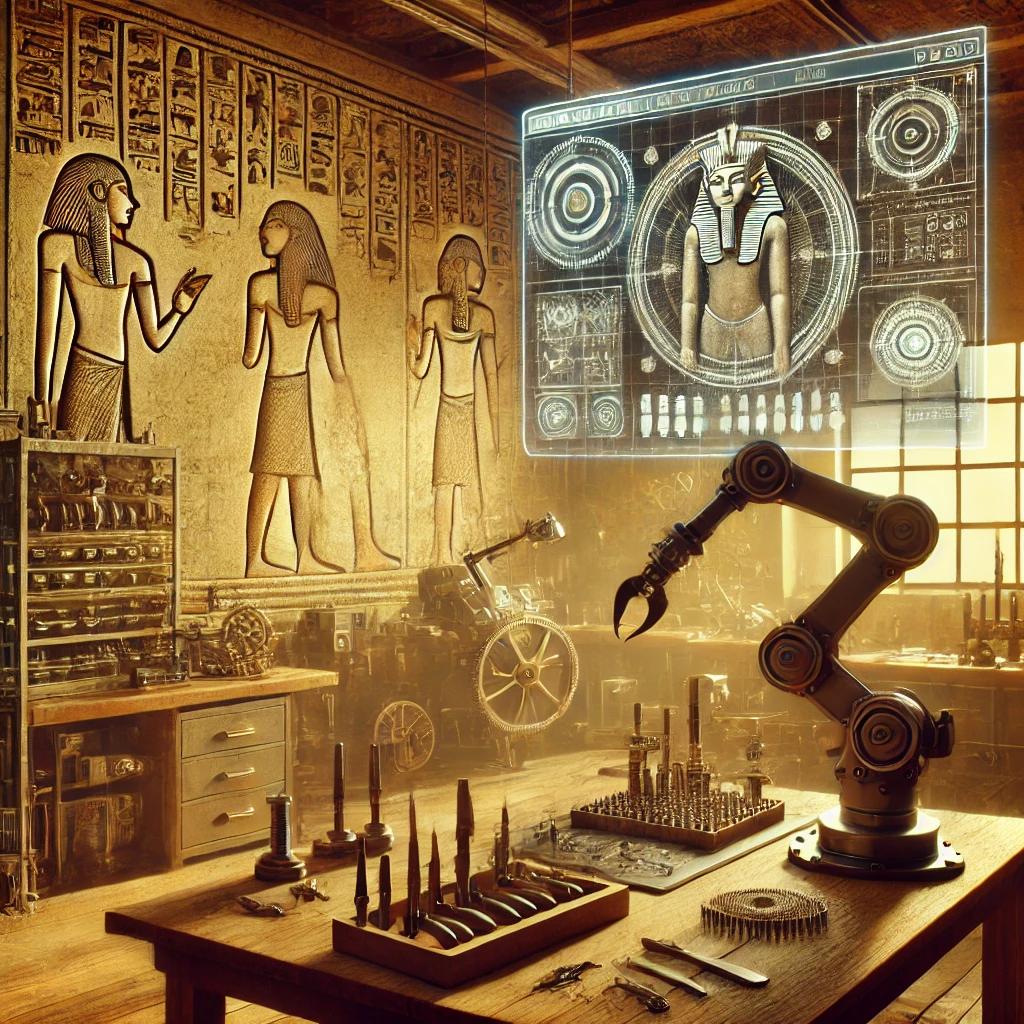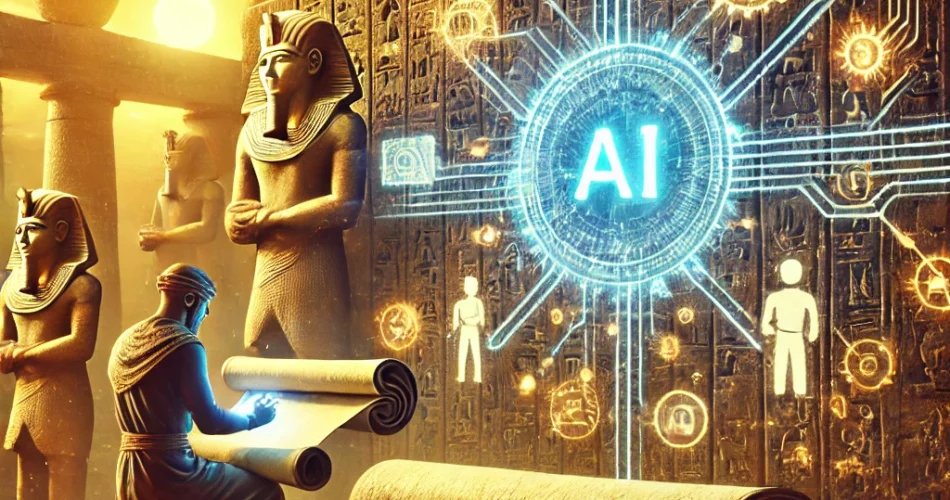History is filled with civilizations that either embraced innovation and thrived or resisted change and collapsed. The Romans engineered aqueducts, allowing their cities to flourish, while the Ottomans dismissed the printing press, keeping their empire technologically stagnant for centuries. The Qing Dynasty rejected industrialization, leading to their downfall as European powers surged ahead.
The same forces of innovation and resistance exist today—this time in the skilled trades. AI is the modern equivalent of the printing press, steam engine, or industrial automation. It is not a futuristic fantasy—it is already reshaping industries in real-time. Businesses that adopt AI are gaining an advantage, streamlining operations, reducing costs, and improving efficiency. Those who delay? They are setting themselves up to be overtaken.
This is the inflection point. Just as ancient civilizations had to choose between adaptation and stagnation, today’s trades—HVAC, plumbing, electrical work, and construction—face the same choice. This article is a roadmap, showing how AI is transforming the trades, why embracing it is urgent, and what happens to those who refuse to evolve.
The trades have always been built on skill, adaptability, and problem-solving. AI doesn’t change that—it enhances it. The only question is: Will your business evolve with AI or fade into history like the empires that refused to change?
AI’s Role in Modern Trades: Customer Experience & Workforce

Throughout history, the success of civilizations was determined by how well they could manage people, communication, and labor. The Romans mastered logistics, road systems, and administrative efficiency, ensuring the rapid deployment of soldiers and supplies. The Phoenicians revolutionized trade with their alphabet, enabling faster and more accurate record-keeping. AI plays the same role in today’s service trades—enhancing communication, optimizing workforce efficiency, and eliminating waste.
AI in Customer Experience: The New Standard
Customer expectations today mirror the speed and efficiency of ancient trade networks—fast, reliable, and seamless. Just as merchants once relied on organized trade routes and predictable supply chains, today’s customers demand instant service, personalized interactions, and real-time problem-solving. AI is now the bridge between business and consumer, ensuring that service providers meet modern expectations.
- AI Chatbots & Virtual Assistants now act as the front line of customer interaction, instantly handling inquiries, scheduling appointments, and providing troubleshooting guidance—similar to how scribes and messengers once relayed vital information across empires.
- AI-Powered Scheduling & Dispatching ensures optimal technician routing, reducing delays—much like how ancient postal relay systems improved communication across vast territories.
- AI-Driven Personalized Marketing tailors outreach to specific customers, predicting their needs before they arise—just as early merchants tracked buyer behaviors to optimize their trade routes and offerings.
📌 Reality Check: 90% of customers now expect immediate responses from businesses. AI ensures service companies meet this demand—without adding to labor costs.
AI in Workforce Efficiency: The Evolution of Skilled Labor
In the past, blacksmiths, stonemasons, and architects passed down their skills through apprenticeships. Today, AI is transforming how workers learn and refine their trade, making training faster, smarter, and more adaptive.
- AI-Driven Hiring & Training helps businesses identify the right candidates by analyzing experience, work ethic, and compatibility—similar to how guilds once selected and trained the most promising apprentices.
- Augmented Reality (AR) Training allows technicians to practice complex repairs before stepping into the field, reducing errors—just as ancient engineers relied on scaled models before constructing massive structures.
- AI-Powered Job Matching connects skilled workers to projects where they’ll be most effective—mirroring how leaders in ancient civilizations assigned tasks based on expertise.
AI’s Role in Modern Trades: Field Operations
The most powerful civilizations in history thrived because they mastered logistics and resource management. The Romans built the world’s first highway system, enabling swift military movement and trade efficiency. The Mongols perfected courier networks, ensuring rapid communication across their empire. Today, AI is revolutionizing logistics in the trades, allowing service businesses to deploy workers, manage inventory, and complete jobs with unprecedented speed and precision.
AI-Powered Route Optimization: The New Trade Roads
For centuries, travel inefficiencies determined economic success or failure. Just as the Silk Road transformed commerce by optimizing trade routes, AI is optimizing technician dispatching, travel efficiency, and job scheduling.
- AI Scheduling Tools analyze real-time traffic, technician skill sets, and job complexity to assign the right worker to the right job at the right time.
- AI-Driven GPS Routing minimizes delays, reducing drive times—similar to how Roman roads were designed for the fastest possible movement of goods and people.
AI in Technician Training & On-Site Support
The best civilizations didn’t just build infrastructure—they trained experts to maintain and repair it. The Egyptians trained skilled artisans for pyramid construction, and the Romans developed military engineers for large-scale projects. Today, AI ensures that field technicians have the right knowledge instantly.
- Smart Glasses & Augmented Reality (AR) provide real-time repair guidance, allowing less experienced workers to complete complex tasks without relying on on-site supervisors.
- AI Knowledge Bases use machine learning to suggest repair strategies, reducing the need for callbacks and repeat visits—mirroring how ancient architects relied on mathematical records to refine construction methods.
- Example: XOi Technologies’ AI-powered visual support system allows HVAC techs to scan equipment, diagnose faults, and receive repair recommendations instantly.
AI-Optimized Inventory Management: Never Understocked, Never Overstocked
In ancient economies, efficient inventory management was the difference between prosperity and famine. The Mesopotamians pioneered early accounting systems to track grain supplies, ensuring cities never ran out of food. Today, AI is doing the same for service businesses—preventing waste, shortages, and unnecessary costs.
- AI-Driven Inventory Systems track part usage patterns, service history, and seasonal demand to predict what supplies will be needed before they run out.
- Automated Restocking ensures trucks and warehouses always have the right parts on hand—mirroring how ancient civilizations stored surplus grain to prevent shortages.
- Example: Ferguson’s AI-powered inventory system automatically adjusts stock orders, reducing waste and improving service efficiency.
AI in Predictive Maintenance & Data Analysis: Preventative Maintenance
Civilizations that mastered infrastructure maintenance thrived. The Romans engineered aqueducts with self-cleaning mechanisms, ensuring long-term water flow. The Egyptians developed flood prediction systems, allowing them to prepare for the annual Nile floods. Today, AI-powered predictive maintenance follows the same principle: anticipate problems before they occur, reducing failures and costly emergency repairs.
AI-Powered Sensors: Preventing Breakdowns Before They Happen
For centuries, early warning systems determined survival. The Mayan civilization tracked astronomical cycles to predict seasonal changes, ensuring stable agriculture. AI is now applying the same foresight to service businesses, detecting issues in HVAC, plumbing, and electrical systems before they become disasters.
- IoT Sensors & AI Diagnostics continuously monitor equipment performance, water flow, and electrical currents, detecting tiny anomalies before major failures occur.
- Machine Learning Predictive Models analyze historical breakdown patterns to alert businesses about potential failures before they happen.
- Example: Trane and Carrier HVAC units now feature AI-powered predictive sensors that prevent costly system failures by scheduling maintenance before breakdowns occur.
AI Leak Detection in Plumbing: Stopping Disasters Before They Start
Water damage has been one of the greatest threats to human settlements for thousands of years. The Romans developed advanced aqueducts and lead piping, while ancient Chinese engineers created canal systems with overflow controls. Today, AI is solving the same problem—on a much smaller scale—with leak detection technology.
- AI-Powered Smart Water Monitoring detects pressure changes and unusual water flow, identifying small leaks before they escalate into catastrophic failures.
- Automated Shutoff Systems can cut water flow instantly—mirroring how ancient floodgates protected cities from destructive water surges.
- Example: Flo by Moen’s AI-driven leak detection has saved homeowners millions of gallons of water and prevented thousands in property damage.
AI in Building Inspections & Structural Monitoring

Ancient civilizations relied on meticulous inspections to prevent catastrophic failures. The Greeks tested marble strength before constructing temples, and the Romans inspected bridges for early signs of wear. Today, AI-enhanced inspections remove human error and make the process faster and more accurate.
- AI-Powered Drones & Computer Vision scan buildings, electrical systems, and pipelines, identifying structural weaknesses invisible to the human eye.
- Thermal Imaging & Acoustic Sensors detect hidden leaks, faulty wiring, and insulation failures, preventing costly issues down the road.
- Example: OpenSpace AI’s drone-captured imagery generates real-time 3D models of construction sites, allowing businesses to detect issues before they lead to expensive rework.
AI in Predictive Maintenance & Data Analysis: Decision-Making & Business Analytics
The most successful civilizations weren’t just skilled in engineering and logistics—they mastered data-driven decision-making. The Egyptians meticulously tracked agricultural yields to predict famines, while the Babylonians pioneered early forms of financial accounting. In today’s trades, AI serves the same purpose—eliminating guesswork and enabling businesses to make faster, smarter, and more profitable decisions.
AI-Driven Business Intelligence: Seeing the Bigger Picture
In the ancient world, scribes recorded trade transactions and tax collections, providing rulers with the information needed to adjust policies and prepare for shortages. Today, AI takes this to the next level—analyzing millions of data points instantly to provide real-time insights.
- AI-Powered Analytics Platforms track customer behavior, service demand, and operational performance, highlighting areas for improvement.
- Predictive AI Models identify patterns in service requests, technician performance, and seasonal slowdowns, helping businesses allocate resources effectively.
- Example: Tableau AI automatically generates reports showing which services are most profitable, which customers bring the most revenue, and where inefficiencies are costing money.
AI-Powered Financial Forecasting: Smarter Budgeting, Better Margins
Ancient merchants tracked trade fluctuations to prepare for good and bad seasons—a skill that often determined survival. AI does the same today, helping businesses predict cash flow, optimize pricing, and reduce financial risks.
- AI-Driven Pricing Models adjust service rates based on demand, competition, and past customer behavior, ensuring maximum profitability.
- Cash Flow Prediction Algorithms analyze historical revenue patterns to alert business owners about upcoming financial dips or slow seasons.
- Example: QuickBooks AI-powered cash flow forecasting helps small businesses predict financial shortfalls and adjust spending accordingly.
📌 Reality Check: 82% of small businesses fail due to cash flow problems. AI-powered forecasting helps eliminate financial surprises and improve stability.
Overcoming AI Resistance: Addressing Cost, Workforce Concerns & Data Security
Throughout history, people have resisted new technology—only to fall behind. The Luddites opposed industrial machines, the Ottomans ignored the printing press, and many businesses hesitated to adopt the internet. AI is no different—some fear job losses, costs, or privacy concerns.
- AI Investment Costs: Many worry AI is too expensive, but pay-as-you-go SaaS models now make AI tools affordable and scalable.
- Job Security Fears: AI doesn’t replace skilled workers—it enhances them. AI handles repetitive tasks, allowing technicians to focus on skilled labor and problem-solving.
- Data Privacy Concerns: AI collects customer data, but businesses must comply with GDPR, CCPA, and FTC guidelines to ensure ethical data use.
📌 Reality Check: Businesses that delay AI adoption pay more in inefficiencies over time than they would by investing in AI-driven optimization.
The Future of AI in the Trades

The greatest civilizations thrived not just because they built powerful empires, but because they embraced the next era of innovation before anyone else. The Romans mastered aqueducts and roads, the Industrial Revolution harnessed steam power, and the printing press ignited the Renaissance. AI is the next transformative shift—one that will separate the service businesses that lead from those that struggle to keep up.
What’s Coming Next? AI’s Expanding Role in the Trades
AI is still in its early stages, but over the next decade, it will reshape every part of service businesses. Those who integrate AI now will build an insurmountable advantage, while those who hesitate will face increasing pressure from AI-driven competitors.
- AI-Powered Robotics & Automation – Smart robots and AI-driven assistants will handle routine repairs, installations, and diagnostics, allowing skilled workers to focus on high-value tasks.
- Voice-Activated AI Assistants for Technicians – AI-powered systems will allow technicians to troubleshoot and repair equipment hands-free, using voice commands and augmented reality overlays.
- Predictive AI for Seamless Maintenance – AI won’t just predict failures—it will automatically schedule and dispatch service calls before customers even notice a problem.
- AI-Integrated Smart Homes & Buildings – Smart infrastructure will communicate directly with service providers, requesting maintenance before problems arise.
📌 Reality Check: By 2030, AI-driven automation is expected to increase business productivity by up to 40% in industries that adopt it early.
The Final Choice: Adapt or Be Forgotten
Throughout history, those who resisted innovation were left behind. The Ottomans ignored the printing press and lost their intellectual edge. The Qing Dynasty rejected industrialization and fell to foreign powers. Businesses today stand at the same crossroads—ignore AI and risk obsolescence, or embrace it and thrive.
The printing press didn’t eliminate writing—it made it more powerful.
The steam engine didn’t eliminate labor—it made work more efficient.
AI isn’t here to replace skilled trades—it’s here to make them stronger, smarter, and more competitive.
The cost of inaction is far greater than the cost of adaptation. The only question is: Will your business evolve with AI or be left behind like the empires that refused to change?




